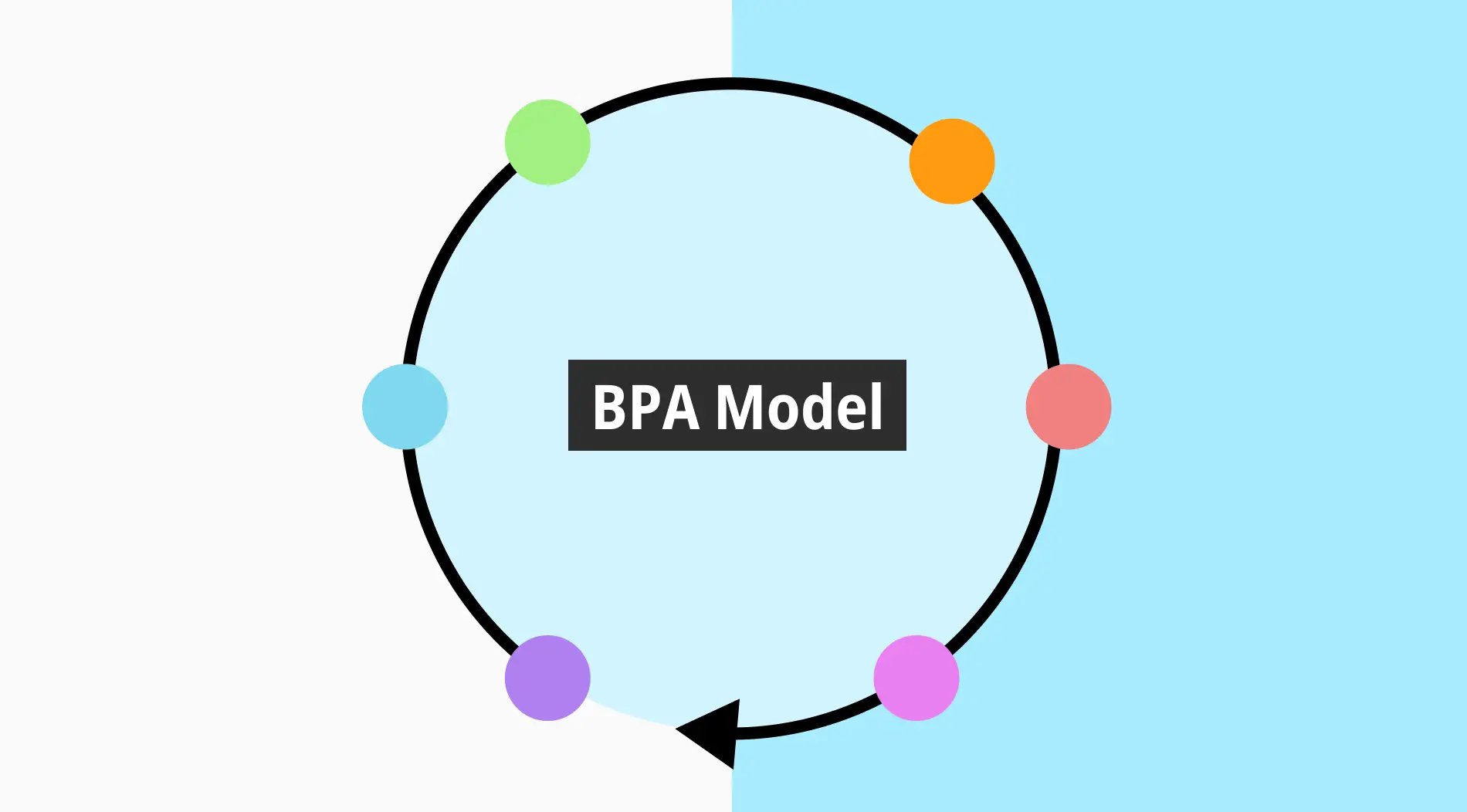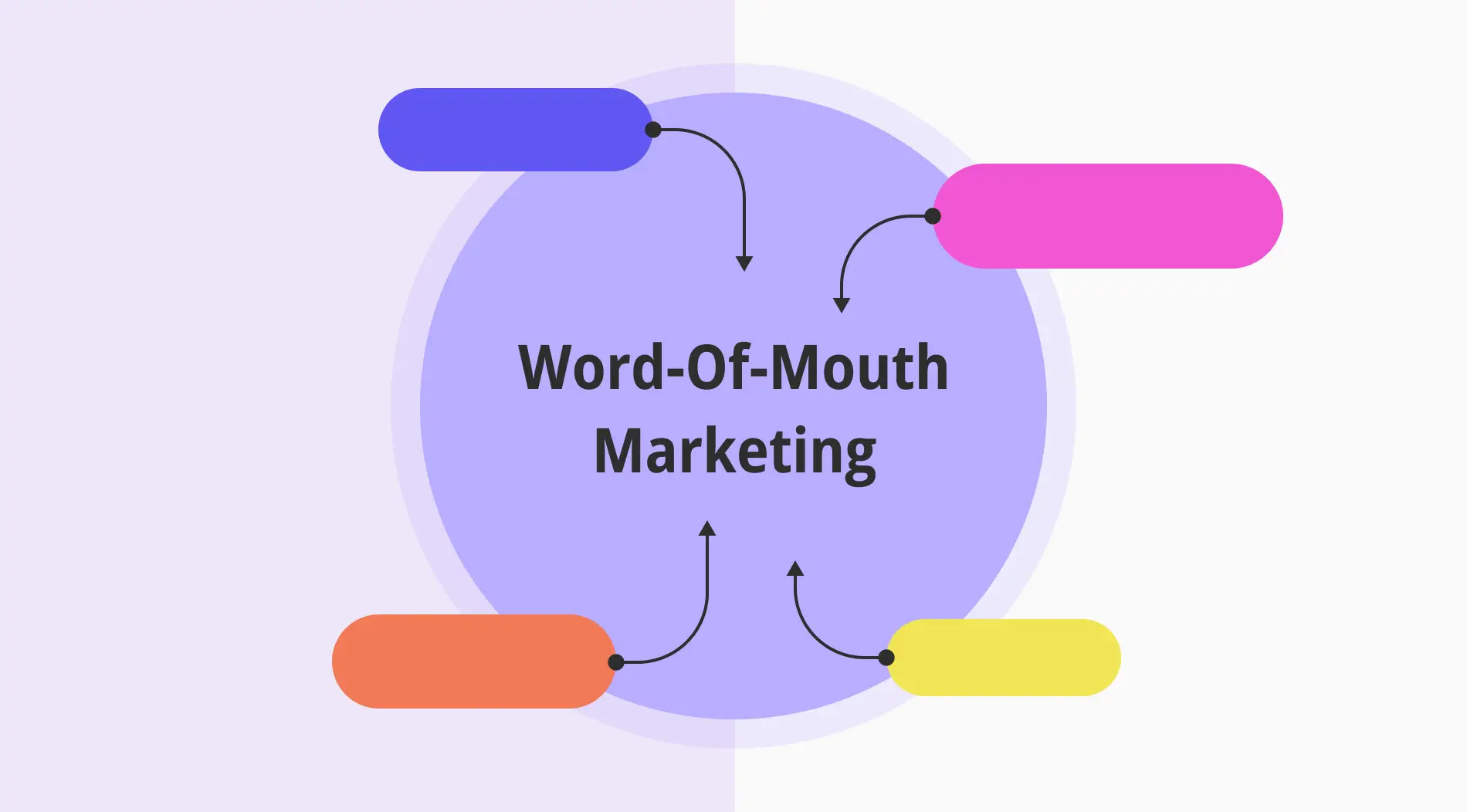In today’s dynamic business environment, the importance of well-structured business models and thorough analysis are evident. Companies, regardless of their size, rely on clearly defined processes to remain competitive and responsive to market demands. These tools are critical and provide them with a structured approach to evaluate and enhance the business processes.
This article delves into the concept of Business Process Analysis (BPA). It is a vital method in today’s fast-paced business world. We will explore it in detail and discover when and how to use it. We’ll examine the advantages and potential drawbacks of BPA. Finally, we will answer the frequently asked questions.
What is business process analysis?
Business Process Analysis (BPA) is a systematic approach to examining and improving the efficiency and effectiveness of a business’s operational processes.
This method involves a detailed breakdown of each step within a process. It does so to uncover inefficiencies, bottlenecks, and areas for potential enhancement. The goal of BPA is to optimize business processes. This ensures that they align with the organizational objectives and deliver maximum value.
1. Purpose
The primary purpose of Business Process Analysis (BPA) is to drive continuous improvement within an organization by identifying and addressing inefficiencies in its processes. This could involve reducing unnecessary steps, automating tasks, or reconfiguring workflows to better align with business goals. BPA is essential for companies aiming to maintain or improve their competitive edge by refining their processes.
2. Approach
The Business Process Analysis (BPA) approach is a very practical business model. It is similar to root cause analysis or gap analysis. It typically begins with mapping out the existing processes in detail. This involves documenting each step of the process, identifying inputs, outputs, and the roles of various stakeholders.
Once you map the process, the next step is to analyze it for inefficiencies, redundancies, or bottlenecks.
6 Steps to follow in business process analysis
Having seen the concept of business process analysis (BPA), let’s dive into it further. In this section, we will see 6 steps to effectively implement the business process analysis in your business. Understanding these steps will help you get more positive results when applying it. We will also give business process analysis examples for each step to help you understand it better.
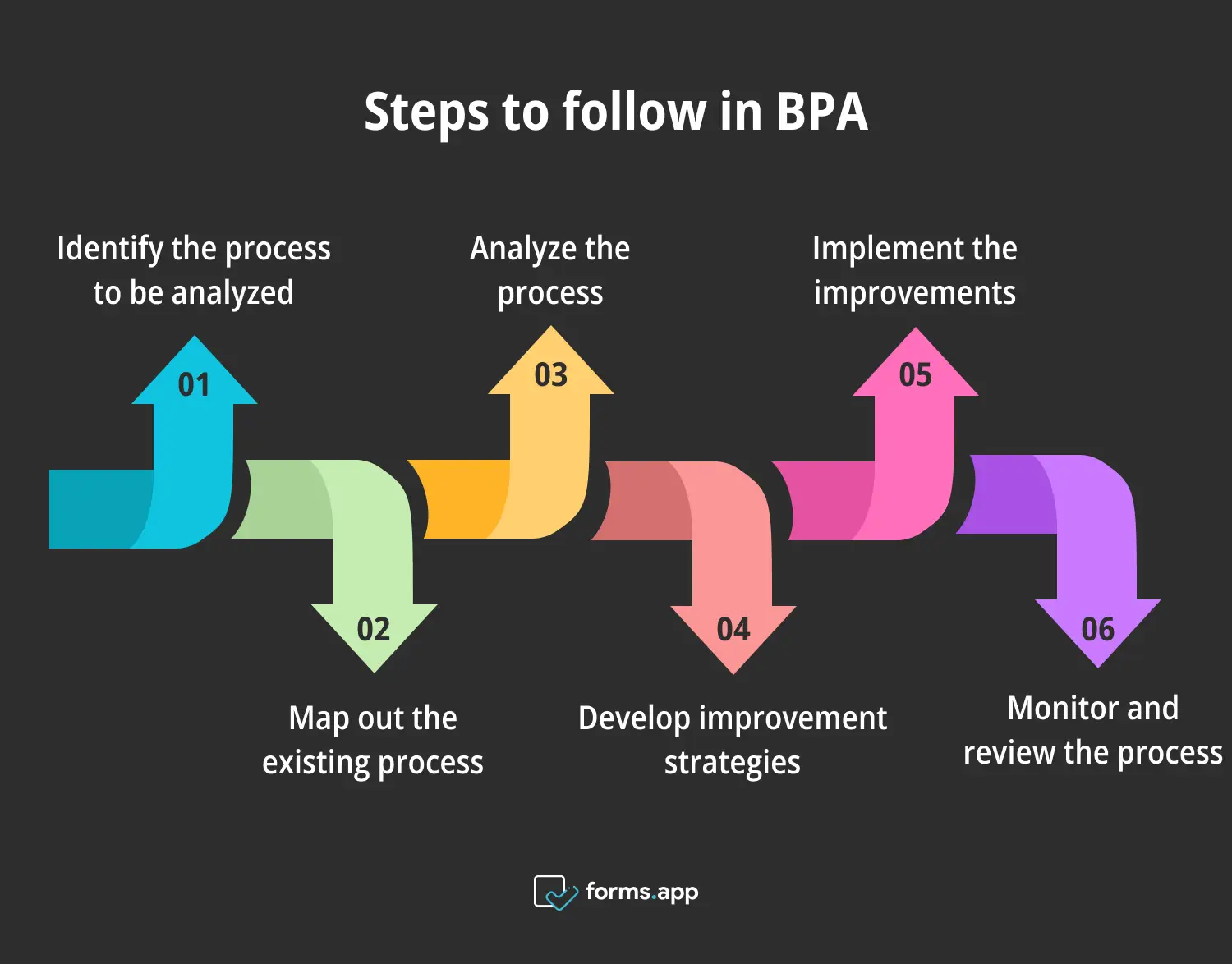
6 Steps for the business process analysis
1- Identify the process to be analyzed
The first step in Business Process Analysis (BPA) is identifying the specific process needing analysis. This involves selecting a process that is critical to your company’s operations. It may also experience issues such as inefficiency, high costs, or customer complaints. The process should have measurable outcomes so that you can assess the performance accurately.
Example: McDonald’s
McDonald’s, a global leader in the fast-food industry, frequently uses BPA to improve its operations. For example, McDonald’s identified its drive-thru service as a process that needed analysis. This was due to increasing customer complaints about wait times.
They selected this process for analysis and aimed to enhance customer satisfaction. They also wanted to increase the efficiency of its service.
2- Map out the existing process
Once you identify the process, the next step is to map out the existing process in detail. This involves creating a visual representation, such as a flowchart, that outlines each step of the process. These include inputs, outputs, and the roles of various stakeholders. The process map should capture all activities, decision points, and interactions within the process.
Example: General Electric (GE)
General Electric (GE) is known for its robust process improvement initiatives. GE wanted to improve its product development process. The company started by mapping out the existing process in detail. This involved creating a comprehensive flowchart that documented every step from the initial concept to the final production.
By mapping out the process, GE was able to identify bottlenecks and inefficiencies that were slowing down product development.
3- Analyze the process
The analysis phase involves focusing on the process map to identify inefficiencies and bottlenecks. It also includes areas where you can improve company performance. This step often includes gathering data on process performance. This may include the time taken for each step, error rates, and resource allocation.
The goal is to pinpoint specific issues that are hindering the process’ effectiveness.
Example: Ford Motor Company
Ford Motor Company has a long history of using BPA to optimize its manufacturing processes. When Ford analyzed its vehicle assembly process, the company identified several bottlenecks that were causing delays and increasing costs. By gathering data on each step of the process, Ford was able to pinpoint specific issues. These were inefficiencies in material handling and assembly line coordination.
4- Develop improvement strategies
Based on the analysis, the next step is to develop strategies to improve the process. This may involve redesigning the process to eliminate inefficiencies, automating certain tasks, or allocating resources. You should align the improvement strategies with your company goals and objectives.
They should be feasible to implement. It’s also important to involve stakeholders in this step.
Example: Toyota
Toyota is famous for its continuous improvement philosophy, known as "Kaizen." When Toyota identified inefficiencies in its supply chain management, the company developed several improvement strategies. These included the implementation of just-in-time inventory management and automation of certain logistics processes. They carefully aligned these strategies with Toyota’s overall goal of reducing waste and increasing efficiency.
5- Implement the improvements
After developing the improvement strategies, the next step is to implement them. This involves putting the proposed changes into action. It may require adjustments to process flows, retraining employees, or investing in new technology. It is important to manage this implementation phase carefully.
You need to minimize disruptions and ensure that you effectively integrate changes into the process.
Example: Starbucks
Starbucks, a global coffeehouse chain, used BPA to enhance its customer service process. After developing strategies to improve the efficiency of order-taking and delivery, Starbucks implemented these changes across its stores. This included retraining baristas on the new processes and introducing new technology to streamline order processing. They carefully managed the implementation to ensure minimal disruption to daily operations.
6- Monitor and review the process
The final step in Business Process Analysis (BPA) is to monitor the improved process and review its performance over time. This involves tracking key performance indicators (KPIs). You need to ensure that your process is meeting its objectives and delivering the expected benefits. Regular reviews allow your organization to identify any new issues that arise and make further adjustments as needed.
Example: Coca-Cola
Coca-Cola is one of the world’s leading beverage companies. It regularly monitors and reviews its production processes to ensure they are efficient and cost-effective. After implementing improvements to its bottling process, Coca-Cola set up a system to track key performance indicators. These included error rates in products or services and resource usage.
Regular reviews of this data allowed Coca-Cola to refine the process further.
When to use the business process analysis
We have seen which steps to take to properly implement the business process analysis. In this section, we will see when to use the business analysis process model in different contexts. We recommend you read this part carefully, as your business may fall under one of these categories. It will help you become a business analyst and use the model in your business.
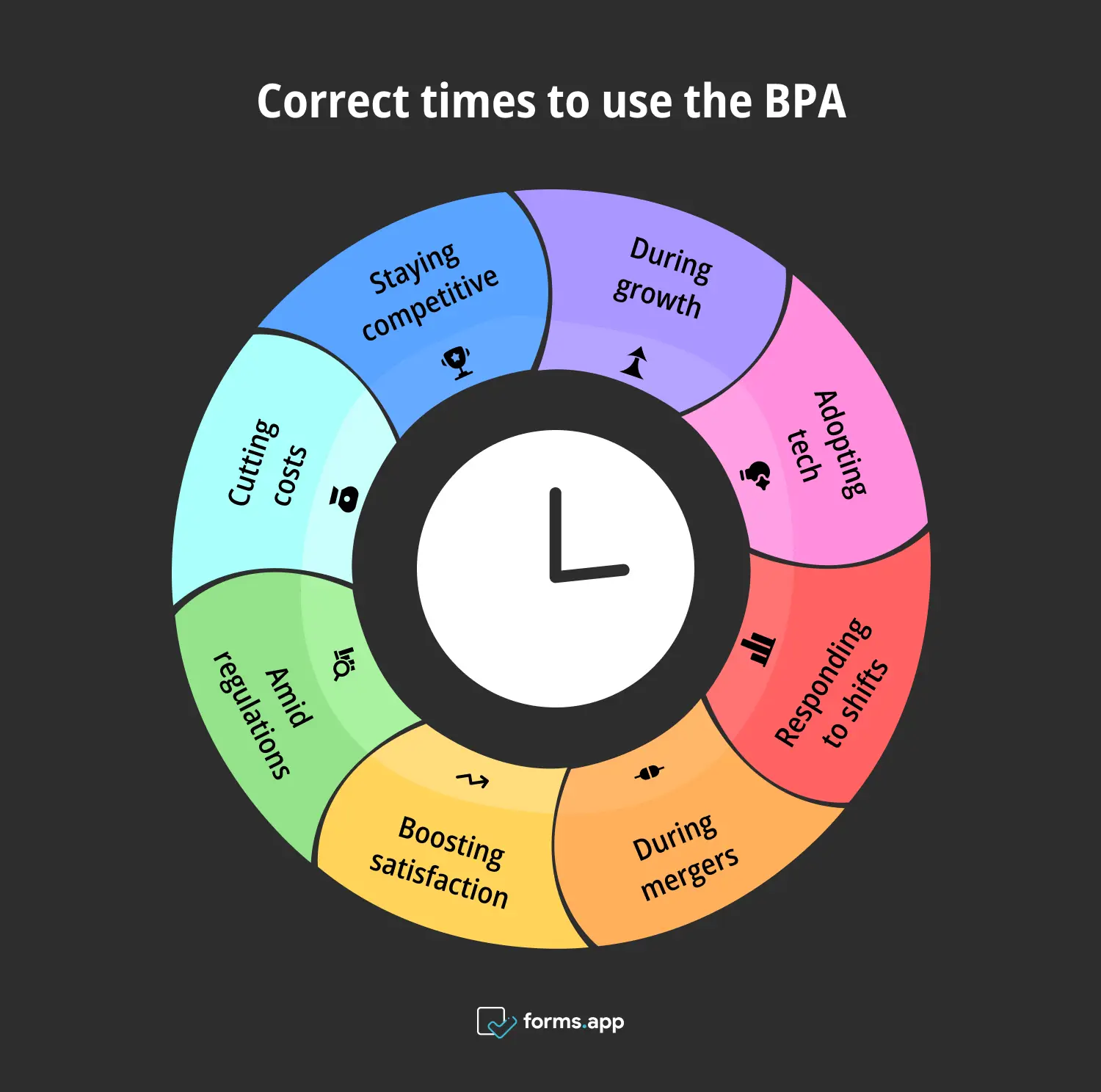
Right times to use the business process analysis
⏰ During business growth phases
When a company enters a phase of rapid growth, its existing processes must scale to accommodate increased demands. Business Process Analysis (BPA) becomes crucial in this context. It helps ensure that the processes that work for a smaller operation can handle the complexities of a larger, more dynamic business.
⏰ When implementing a new technology
The integration of new technology into existing business operations can significantly disrupt workflows and processes. Business Process Analysis (BPA) plays a vital role in ensuring that you seamlessly integrate new technologies. It also minimizes disruption, and maximizes the benefits of the new tools. BPA helps businesses align their processes with the capabilities of the new technology, ensuring a smooth transition.
⏰ In response to market changes
Market conditions can shift rapidly, requiring businesses to adapt their processes quickly to stay competitive. Business Process Analysis (BPA) is an essential tool for companies facing such changes. It allows them to reassess their existing processes and make necessary adjustments. By analyzing processes in light of new market demands, businesses can identify areas where they need to pivot.
⏰ During mergers and acquisitions
Mergers and acquisitions present significant challenges as they involve combining the processes of two or more organizations. Business Process Analysis (BPA) is crucial in this context. It helps streamline and integrate these processes, ensuring a smooth transition.
BPA allows companies to identify overlapping or redundant processes and standardize operations. It also helps them align the merged entity’s workflows with its overall strategic goals.
⏰ To improve customer satisfaction
Customer satisfaction is closely linked to the efficiency and effectiveness of a company’s processes. Business Process Analysis (BPA) can help businesses identify and eliminate pain points in their customer-facing operations. This leads to a better customer experience. It streamlines the order process, improving customer service response times, and enhancing the overall user experience.
BPA provides the insights needed to make meaningful improvements that directly impact customer satisfaction.
⏰ When facing regulatory changes
Regulatory changes can have a significant impact on business operations, requiring companies to adapt their processes to remain compliant. Business Process Analysis (BPA) is essential in these situations. It helps businesses understand the implications of new regulations and adjust their processes accordingly. By conducting a thorough analysis, companies can ensure they meet regulatory requirements without disrupting their operations or compromising efficiency.
⏰ To reduce costs
Cost reduction is a common goal for many businesses. Business Process Analysis (BPA) is a powerful tool in achieving this objective. By identifying inefficiencies and waste within processes, BPA helps businesses develop strategies to reduce operational costs. It streamlines workflows, automating tasks, and reconfiguring resources.
BPA provides the insights needed to make cost-effective improvements.
⏰ To enhance competitiveness
In a highly competitive market, businesses need to improve their processes to stay ahead of the competition. Business Process Analysis (BPA) helps companies identify areas where they can gain a competitive advantage. They do so improving efficiency, reducing costs, or enhancing the customer experience. By regularly conducting BPA, businesses can ensure they are operating at peak performance and staying ahead of their rivals.
Advantages and disadvantages of business process analysis
We have briefly touched upon the advantages of the steps and suitable environments for the business process analysis. In this section, we will talk about the advantages of process analysis in operations management. Like any other model (see best tools for businesses), this analysis also has some limitations and drawbacks. Let’s see them both:
Advantages
➕ Increased efficiency: One of the primary advantages of Business Process Analysis (BPA) is increased efficiency. By identifying and eliminating inefficiencies in business processes, BPA helps organizations streamline their operations, reduce waste, and make better use of their resources.
➕ Cost reduction: Cost reduction is another significant benefit of Business Process Analysis (BPA). By analyzing processes and identifying areas where you waste or inefficiently use resources, BPA allows organizations to cut unnecessary costs. This might involve automating certain tasks or reducing the number of steps in a process.
➕ Improved customer satisfaction: Business Process Analysis (BPA) can also lead to improved customer satisfaction by enhancing the quality and efficiency of customer-facing processes. For example, BPA can help streamline order processing, reduce delivery times, and improve the accuracy of customer service.
➕ Better compliance: In industries with strict regulations, Business Process Analysis (BPA) is essential for ensuring compliance with legal and regulatory requirements. Organizations need to thoroughly analyze processes. They can identify areas where they may be at risk of non-compliance and take steps to address these issues.
➕ Enhanced agility: In today’s fast-paced business environment, agility is crucial. Business Process Analysis (BPA) helps organizations become more agile. It does so by enabling them to quickly identify and respond to changes in the market.
➕ Continuous improvement: Business Process Analysis (BPA) fosters a culture of continuous improvement within organizations. By regularly analyzing and refining processes, BPA encourages organizations to constantly seek ways to enhance their operations. This focus on continuous improvement helps organizations stay ahead of the competition.
Disadvantages
➖ Time-consuming: One of the main drawbacks of Business Process Analysis (BPA) is that it can be time-consuming. Thoroughly analyzing a business process requires a significant investment of time and resources. This is the case, especially if there are complex processes or it involve multiple stakeholders.
➖ Potential resistance to change: Another potential drawback of Business Process Analysis (BPA) is resistance to change. People within an organization may be reluctant to alter established processes. This can happen, especially if they are accustomed to working in a certain way.
➖ High initial costs: The initial costs of Business Process Analysis (BPA) can be high. This may be the case, particularly for organizations that need to invest in new tools, technologies, or training. These upfront costs may include hiring consultants, purchasing software, or dedicating staff time to the analysis.
6 Expert tips for a better business process analysis
Now, we will move to the frequently asked questions about BPA and the conclusion. But first, we will provide you with 6 expert tips for a better business process analysis. Understanding these business process analysis techniques will help you implement them better in your business.
They will also help you achieve more positive results. Here are the tips:
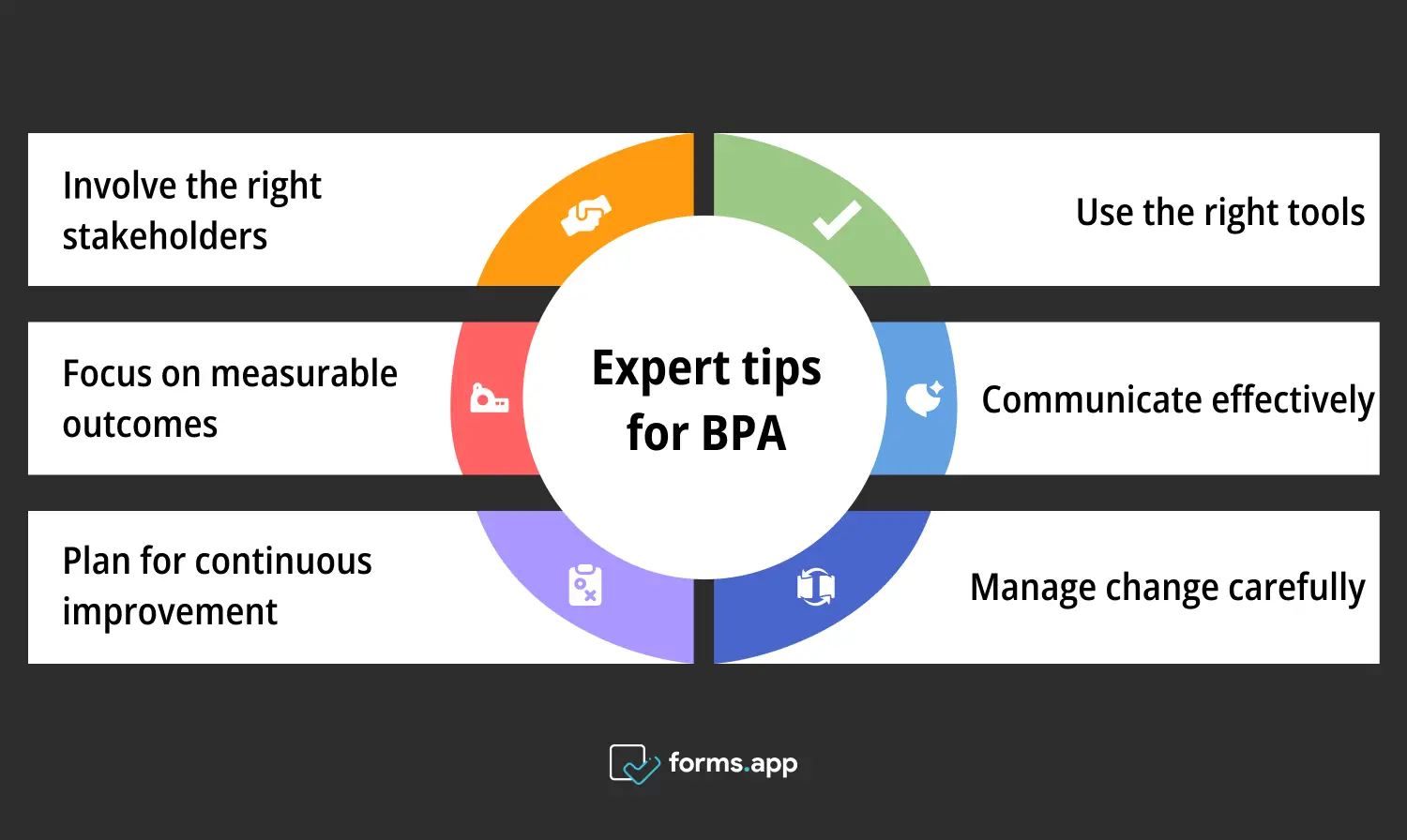
Pro tips for the BPA
1- Involve the right stakeholders
Involving the right stakeholders is crucial for the success of Business Process Analysis (BPA). Stakeholders who directly take part in the process should also participate in the analysis. They should ensure that they consider all perspectives.
This not only helps ensure that the analysis is accurate but also increases buy-in for the proposed changes. Involving stakeholders early in the process also helps identify potential resistance. This helps them ensure change and allows for the development of strategies to address it.
2- Use the right tools
Using the right tools can greatly enhance the effectiveness of Business Process Analysis (BPA). Tools such as process mapping software, data analytics platforms, and workflow automation solutions can streamline the analysis process. They can also provide more accurate insights.
These business process analysis tools can help organizations visualize processes, identify inefficiencies, and track the impact of changes. It’s important to choose tools that are appropriate for the organizational needs. This way, you can easily integrate into existing workflows.
3- Focus on measurable outcomes
To ensure that Business Process Analysis (BPA) delivers tangible benefits, it’s important to focus on measurable outcomes. This means setting clear, quantifiable goals for the analysis, such as reducing costs, improving efficiency, or increasing customer satisfaction.
You need to focus on measurable outcomes. Your organization can easily track the success of its BPA initiatives and make data-driven decisions about further improvements. This also helps demonstrate the value of BPA to stakeholders and secure support for future initiatives.
4- Communicate effectively
Effective communication is essential throughout the Business Process Analysis (BPA) process. This includes communicating the purpose and goals of the analysis to stakeholders and providing regular updates on progress. You also need to explain the reasons for any proposed changes.
Transparent communication helps build trust and reduces resistance to change. It also ensures that everyone involved understands their role in the process. It’s also important to listen to feedback from stakeholders and address any concerns they may have.
5- Plan for continuous improvement
Business Process Analysis (BPA) is not a one-time activity. It is a part of a continuous improvement cycle. After implementing changes, organizations should regularly review and analyze their processes to identify new opportunities for improvement.
This ongoing focus on process improvement helps organizations stay competitive, responsive, and efficient. Planning for continuous improvement also ensures that BPA becomes an integral part of the organizational culture and operations.
6- Manage change carefully
Managing change is a critical aspect of successful Business Process Analysis (BPA). Changes to processes can be disruptive, so it’s important to have a clear change management plan in place. This plan should include strategies for communicating changes and providing training and support to employees. It should also address any issues that arise during implementation.
Effective change management helps minimize disruptions, reduce resistance, and ensure that you successfully integrate the improvements into the organization.
Frequently asked questions about the BPA
Last but not least, let’s answer some of the most frequently asked questions about the business process analysis. These questions touch upon some important aspects of the BPA analysis. The insights in brief answers will help you improve your business processes.
Business Process Analysis (BPA) evaluates organizational processes to identify inefficiencies, bottlenecks, and opportunities for improvement. It aims to streamline operations, reduce costs, and enhance performance by analyzing workflows, tasks, and resource allocation. The goal is to make processes more efficient and aligned with the organizational objectives.
BPMN (Business Process Model and Notation) is a standardized graphical representation used in business analysis to visualize and document processes. It provides a clear, detailed map of workflows, making it easier to analyze, design, and improve processes. Businesses widely use the BPMN to ensure consistency and understanding across teams and stakeholders.
In BPMN, KPI (Key Performance Indicator) refers to specific metrics used to measure the performance of a business process. KPIs help track the effectiveness, efficiency, and outcomes of processes. They are crucial for assessing a process and identifying areas for further improvement during business process analysis.
Final words
Business process analysis (BPA) is essential for improving efficiency, reducing costs, and enhancing organizational performance. Your company can identify bottlenecks, eliminate inefficiencies, and optimize workflows by analyzing processes. Involving stakeholders, using the right tools, and focusing on measurable outcomes are critical to successful BPA. Continuous improvement and effective change management ensure long-term benefits and a competitive edge.
In this article, we have covered the business process analysis (BPA) in detail. We have seen its process steps, suitable environments, and advantages and disadvantages. We have given examples from well-known companies and expert tips for better implementation. Finally, we have answered some common queries.
Create your business process analysis template today!
Fatih is a content writer at forms.app and a translator specializing in many text domains, including medical, legal, and technical. He loves studying foreign languages. Fatih especially likes to create content about program management, organizational models, and planning tools.
